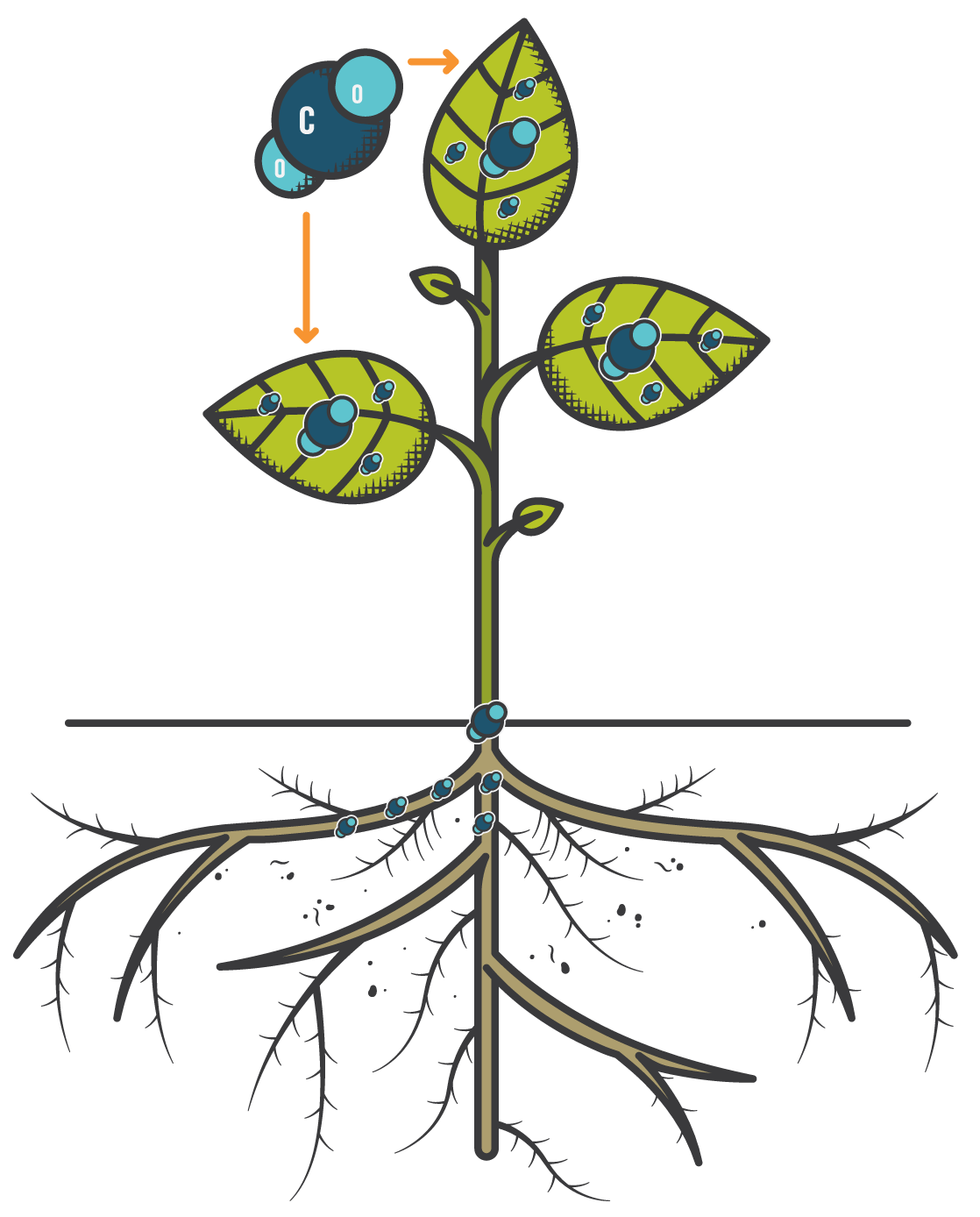The solution to global warming is right beneath our feet.
Posted by Daniel Schuurman on
Greenhouse gases—primarily carbon dioxide but also methane, ozone, and nitrous oxide—have been released from soil and water into the atmosphere by natural processes for millions of years. We need some amount of these gases, since they trap solar radiation and make our planet habitable.
Carbon is Increasing
But the balance of this natural cycling tipped when people began to extract and release increasing amounts of carbon for human advancement, starting with the dawn of agriculture 10,000-plus years ago.
The advent of tillage and deforestation released excessive amounts of carbon dioxide from our soils. The problem worsened when we became dependent on fossil fuels to power our lives.
But we can take that excess carbon from the atmosphere and put it back underground.
If we converted all global croplands and pastures to regenerative organic agriculture we could sequester more than 100% of current annual CO2 emissions.
HOW IT WORKS
 Plants and carbon live in constant dialogue. During photosynthesis, plants use solar energy to extract carbohydrate molecules, or sugar, from carbon dioxide.
Plants and carbon live in constant dialogue. During photosynthesis, plants use solar energy to extract carbohydrate molecules, or sugar, from carbon dioxide.
Those carbon-based sugars are extruded from the plant’s roots, feeding bacteria and fungi in the nearby soil. In turn, these microorganisms symbiotically transform soil minerals into nutrients that feed plants and help plants fight disease and pest pressure.
During this exchange, the sugars that get consumed by soil bacteria and fungi are converted into more stable materials that trap carbon in the soil for decades, even centuries. Healthier soil truly means a healthier planet.
REGENERATIVE ORGANIC AGRICULTURE
Learn more about the down-to-earth solution to global warming by downloading Rodale Institute's white paper on Regenerative Organic Agriculture.
DOWNLOAD NOWShare this post
0 comment
